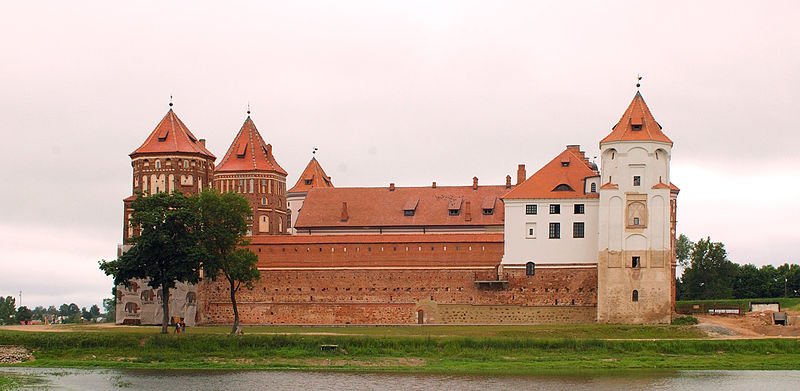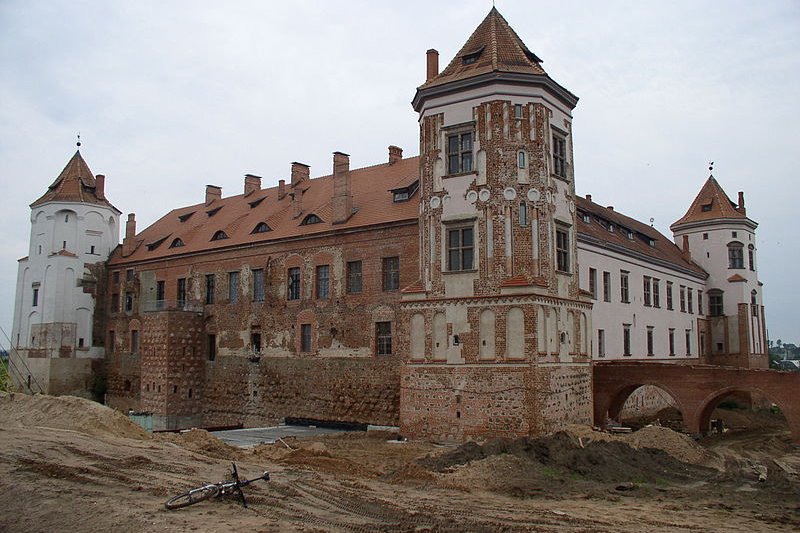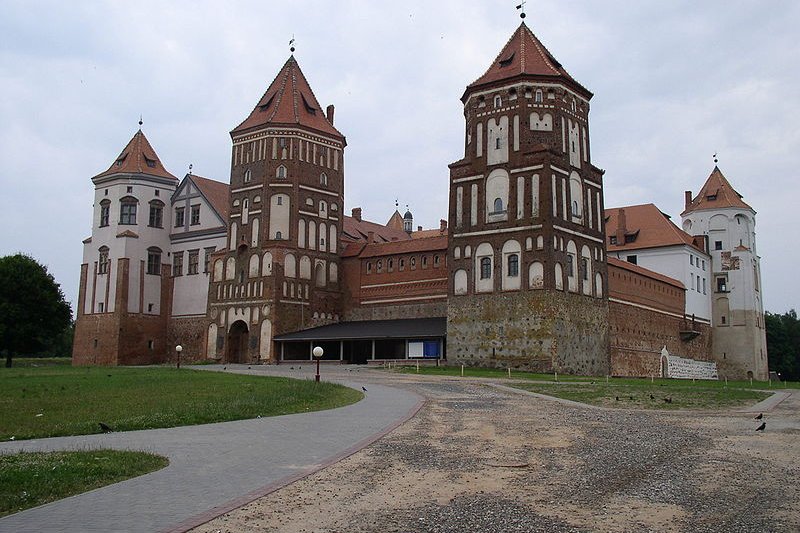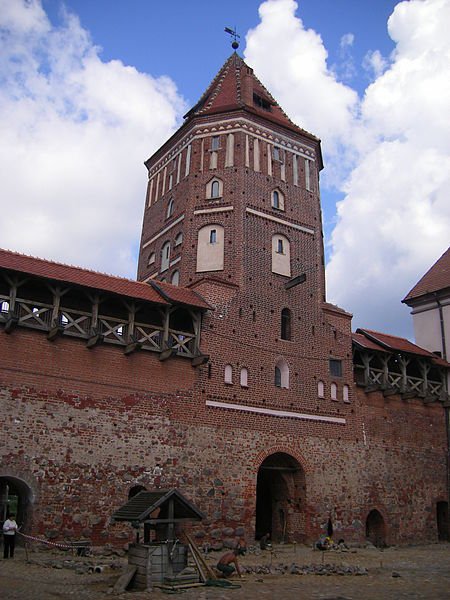 Mir Castle Complex, Belarus
Mir Castle Complex, BelarusSource: https://commons.wikimedia.org/wiki/File:Mir-Castle.jpg
Author: Torarne

The Mir Castle Complex is a 15th century Gothic-style castle that is recognized as a World Heritage Site in Belarus. It was inscribed during the 24th session of the World Heritage Committee inThe Committee applauded the property for being an exceptional example of central European castle, and for exhibiting successive layers of cultural influences. This, in itself, is a testimony of the region where Mir Castle stands, which has a long and often turbulent history of cultural coalescence.
Mir Castle was first built in the 15th century in Gothic style. Subsequent extension work added wings in the Renaissance style followed by the Baroque style. It was abandoned for nearly a century during the Napoleonic period. During that time it became run down and dilapidated. Eventually it restored at the turn of the 19th century, with the addition of contemporary elements.
 View of the drained, excavated moat of Mir Castle
View of the drained, excavated moat of Mir CastleSource: https://commons.wikimedia.org/wiki/File:Belarus-Mir-Castle-6.jpg
Author: Alex Zelenko

History of Mir Castle
Mir Castle has passed through several owners in its long history. It was built by Duke Illinich. Construction began in the late 15th century, and completed in the early 16th century. In 1568, Prince Mikołaj Krzysztof Radziwiłł the Orphan became the owner. He renovated it, adding to the castle a three-storey palace along the eastern and northern walls in the Renaissance style.Mir Castle fell into disrepair for close to one hundred years during the Napoleonic period. During that time it remain in the Radziwiłł family until 1813, with the death of Prince Dominik Hieronim Radziwiłł (1786-1813). It, along with 12,000 sq km of land in Central Europe, passed into the hands of his daughter Princess Caroline (Stefania) Radziwiłł, who married Prince Ludwig Adolf Friedrich of Sayn-Wittgenstein (1799-1866), a Russian aristocrat of German descent.
From this union, ownership to Mir Castle flowed to their daughter Maria, who married Prince Chlodwig Hohenlohe-Schillingsfürst (1819-1901), who became Chancellor of Germany and Prime Minister of Prussia. Their son, Maurice Hohenlohe-Schillingfürst sold Mir Castle to Prince Nikolai Ivanovitch Sviatopolk-Mirski (1833-1898), a Russian general and politician, who engaged architect Teodor Bursze to repair and further renovate it. It remained in the hands of the Sviatopolk-Mirski family until 1939, when the Nazis took possession of it.
 Driveway towards Mir Castle Complex, Belarus (2005)
Driveway towards Mir Castle Complex, Belarus (2005)Source: https://commons.wikimedia.org/wiki/File:Belarus-Mir-Castle-2.jpg
Author: Alex Zelenko

World Heritage Site Inscription Details
Location: N 53 27 03.9 E 26 28 21.8Inscription Year: 2000
Type of Site: Cultural
Inscription Criteria: II, IV
 A tower at Mir Castle Complex
A tower at Mir Castle ComplexSource: https://commons.wikimedia.org/wiki/File:MirCastle2.JPG
Author: Szeder László

 Latest updates on Penang Travel Tips
Latest updates on Penang Travel Tips

Copyright © 2003-2025 Timothy Tye. All Rights Reserved.

 Go Back
Go Back